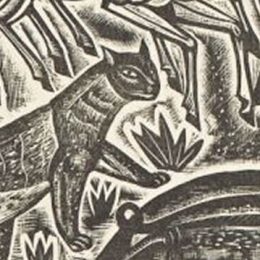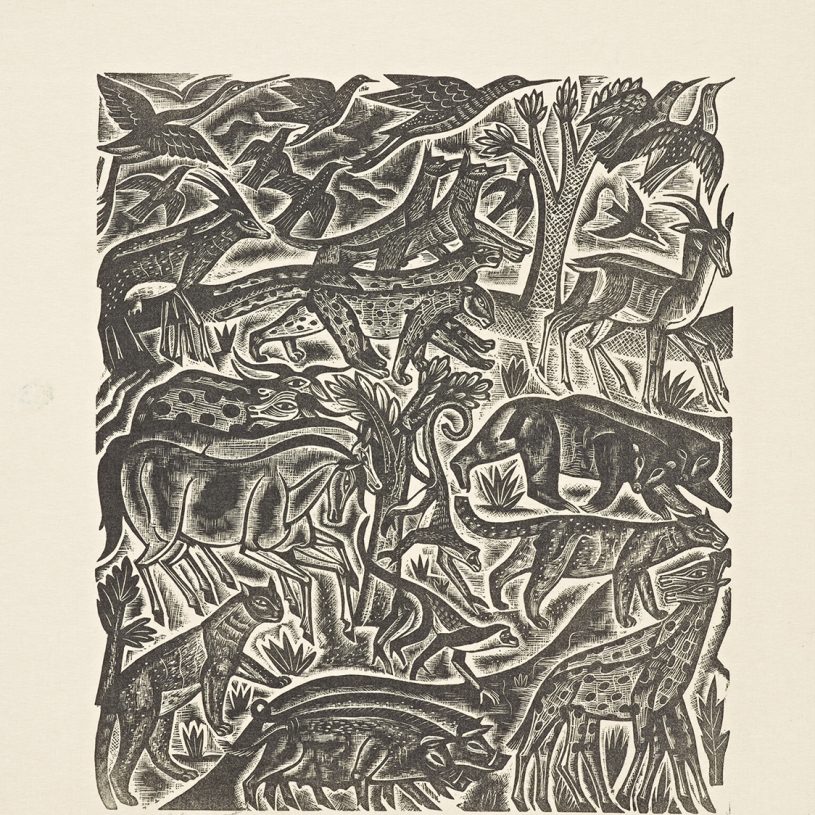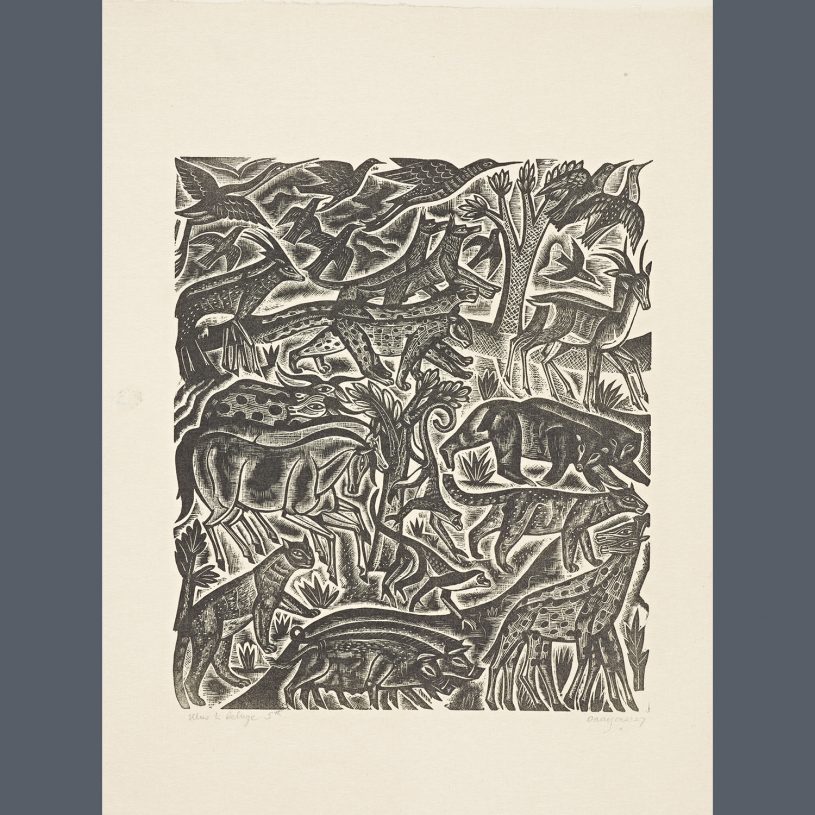Who, what and where?
This was produced by 20th century artist and poet, David Jones (1895-1974). Though far less well-known than he deserves, Jones is one of the most extraordinary artists of the 20th century. He worked with a range of mediums, including watercolour, wood and copper engraving, lettering, and poetry. Jim Ede—once curator of the Tate Modern and creator of Kettle’s Yard Cambridge—spoke of him in 1940 as “not only the best water-colourist working in Great Britain today but by far the best engraver, a poet and writer of genius, in all a most imaginative artist.” At the young age of 14, his parents sent him to Camberwell School of Art where he studied until he enlisted as a soldier in World War I. It was, surprisingly, in the context of war, that David Jones’ imagination as an artist became indissolubly wedded with his Catholic faith, and his first epic poem, In Parenthesis, was forged out of this experience. After the war, he joined a community of craftsmen and women at Ditchling Commons, founded by Eric Gill and Hilary Pepler, and it was here that he first learned how to engrave on wood.
David Jones was commissioned by Golden Cockerel Press to produce this wood engraving for a new edition of one of England’s oldest and finest mystery plays, The Chester Play of the Deluge. From his earliest years, David Jones loved drawing animals and would spend much time at London Zoo, studying and sketching the lions, bears and other wild creatures. He would later become one of the best wood engravers in Britain and his illustrations for The Deluge are widely considered to be among his best. Here are a few lines of the play, which Jones’ image illustrates:
“Sir, here are lions, leopards in;
horses, mares, oxen and swine,
goats, calves, sheep and kind
here sit, thou may see.
Camels, asses, man may find,
buck and doe, hart and hind.
All beasts of all manner of kind
here be, as thinketh me.”


















 Faculty of Divinity
Faculty of Divinity